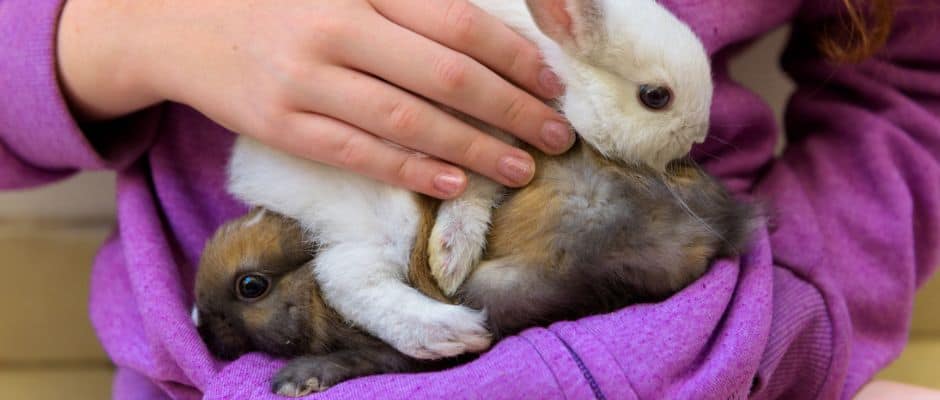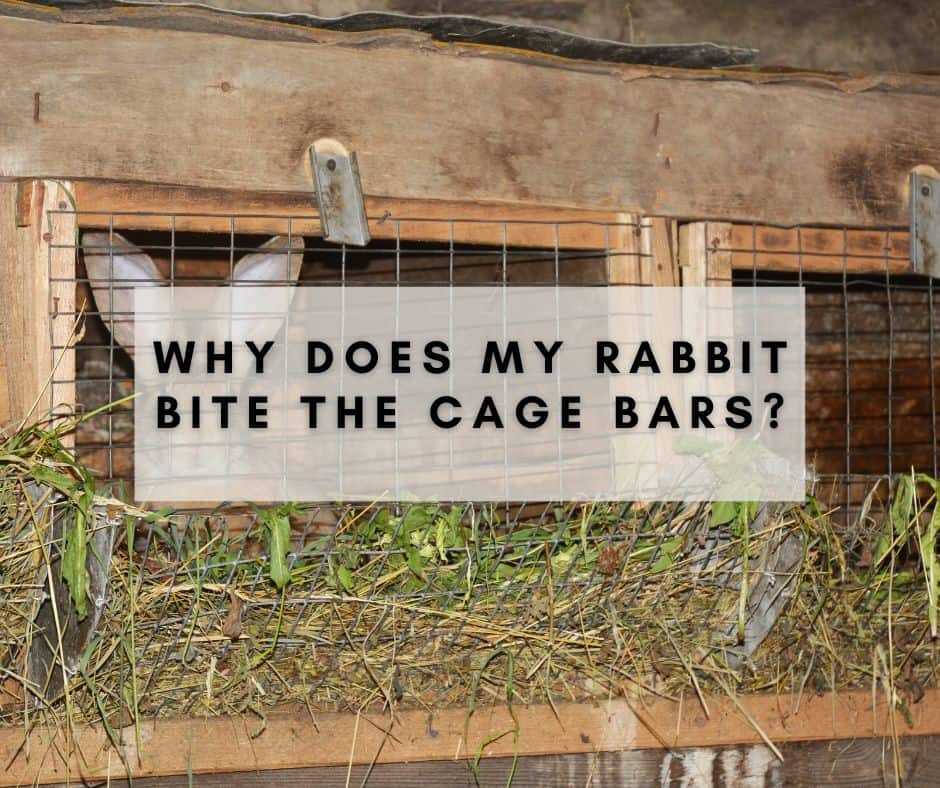Bunnies are adorable creatures that make great pets. They are known for their cute fluffy tails, long ears, and their love for hay (or carrots?). But what do bunnies like to sleep on? This is a common question among bunny owners, and it’s important to provide your furry friend with a comfortable sleeping area to ensure they get the rest they need.
As a general rule, wild rabbits love to sleep in cool areas, which helps cool their temperature in hot weather. They often also fill their sleeping areas with hay or grass to keep warm during winter. Indoor rabbits also tend to sleep in cool areas. Their sleeping nature is quite similar to that of wild rabbits.
While bunnies can sleep anywhere, it’s important to provide them with a designated sleeping area. This can be a cozy bed or a comfortable spot in their cage. In this article, we will explore what bunnies like to sleep on, including the best bedding options and materials to keep your furry friend happy and comfortable.
Contents
The Ideal Sleeping Environment for Bunnies
Bunnies need a comfortable, safe, and quiet place to sleep. Creating the ideal sleeping environment for bunnies is important to ensure they get enough rest and stay healthy. The ideal sleeping environment for bunnies includes three main factors: temperature, lighting, and noise.
Temperature
The temperature of a bunny’s sleeping environment should be between 60-70°F (15-21°C). Bunnies are sensitive to temperature changes, so it is important to keep their sleeping area at a consistent temperature. If a bunny is too cold or too hot, it may become stressed, which can lead to health problems. Providing a warm, cozy, and draft-free sleeping area is essential to keep bunnies happy and healthy.
Lighting
Bunnies are crepuscular animals, which means they are most active during dawn and dusk. They need a dark and quiet sleeping environment to get enough rest. It is important to avoid bright lights or loud noises in the bunny’s sleeping area, as this can disrupt their sleep cycle. Covering the bunny’s cage with a blanket or using blackout curtains can help create a dark and quiet sleeping environment.
Noise
Bunnies are sensitive to loud noises and sudden movements. They need a quiet sleeping environment to feel safe and comfortable. It is important to place the bunny’s sleeping area away from noisy areas such as the TV, stereo, or busy roads. Providing a quiet and peaceful sleeping environment can help bunnies get enough rest and stay healthy.

The Best Bedding for Bunnies
Hay
Straw is another natural bedding option for bunnies. It is soft and absorbent, but not as comfortable as hay. It is also less dusty than hay, making it a good option for bunnies with respiratory issues. However, straw can be prickly, so it is recommended to use a layer of hay on top of the straw for added comfort.
Recycled Paper
When choosing bedding for your rabbit, it’s important to consider their respiratory health. Recycled paper products, such as newspaper-based bedding, are a good option as they are less likely to irritate your rabbit’s sensitive respiratory system compared to wood shavings.
However, avoid using glossy newsprint or advertisements as they don’t absorb moisture and can be unhealthy for your rabbit. Additionally, be aware that some newsprint inks can rub off on your rabbit and leave them dirty!
Wood Shavings
Wood shavings are a popular bedding choice for bunnies as they are soft, absorbent, and provide good insulation. However, it is important to use kiln-dried shavings as opposed to regular sawdust, which can be dusty and harmful to the bunny’s respiratory system. It is also recommended to avoid using cedar or pine shavings as they contain oils that can be toxic to bunnies.
When choosing bedding for bunnies, it is important to consider their individual needs and preferences. Some bunnies may prefer a certain type of bedding over others, and it is important to monitor their behavior and health to ensure they are comfortable and safe. It is also recommended to clean their sleeping area regularly to maintain good hygiene and prevent any potential health issues.
Alternative Sleeping Options for Bunnies
Bunnies are known for being active at dawn and dusk, but they also need a good amount of sleep to stay healthy and happy. While there are plenty of bedding options available for bunnies, some may prefer alternative sleeping options. Here are a few options to consider:
Cardboard Boxes
Cardboard boxes can make great sleeping options for bunnies. They are inexpensive, easy to find, and can be recycled when they are no longer needed. Bunnies enjoy chewing on cardboard and creating their little hideaways. Make sure to remove any tape or staples from the box before giving it to your bunny to avoid any potential hazards.
Baskets
Baskets can also be a great option for bunnies to sleep in. They provide a cozy and comfortable space for them to rest. Baskets made of natural materials like wicker or bamboo are a good choice as they are safe for bunnies to chew on. Make sure to choose a basket that is big enough for your bunny to move around comfortably.
Towels
Towels are a simple and easy option for bunny bedding. They are soft and comfortable for bunnies to sleep on and can easily be washed. You can place a towel in your bunny’s sleeping area or fold it up and place it in a cardboard box or basket for added comfort.
It’s important to keep in mind that every bunny is different and may have its preferences when it comes to sleeping options. It’s important to observe your bunny’s behavior and adjust its sleeping area accordingly.
Household Items That Can Double as a Cozy Bunny Bed: Pros and Cons
Bunnies love having a cozy and comfortable place to rest and sleep, and as a bunny owner, it’s essential to provide your furry friend with a safe and comfortable bed. While there are many commercial bunny beds available on the market, you may also have some suitable options right in your own home!
This table highlights some common household items that can be used as a bed for your bunny, along with their respective pros and cons to help you make an informed decision.
| Household Item | Pros | Cons |
|---|---|---|
| Cardboard box | Inexpensive, easy to find, can be customized | May not be durable, can be chewed through |
| A basket filled with hay or fleece | Cozy and comfortable, can be easily washed or replaced | May not be comfortable to lay on, and can be difficult to clean |
| Ceramic or plastic plant pot | Heavy enough to prevent tipping, provides a hideaway for the bunny | Spacious, allows for airflow, easily washable |
| Laundry basket lined with a blanket | May not be as cozy as other options, the bunny may chew through the blanket | May be too small for larger bunnies, and some designs may be difficult to get in and out of |
| Cat or dog bed | Soft and comfortable, designed for pets, easy to clean | May be too small for larger bunnies, some designs may be difficult to get in and out of |
| Hammock | Comfortable, can be hung in a variety of locations | May not be suitable for older or disabled bunnies, can be challenging to get in and out of |
FAQ
Here are some frequently asked questions about what bunnies like to sleep on:
Q: What kind of bedding is best for bunnies?
A: Bunnies like to sleep on soft, comfortable surfaces. Some options for bedding include towels, blankets, plush toys, aspen shreds, specialist litter or pellets, shredded paper, and hay. It is important to observe your bunny’s reaction to different materials to select the perfect bedding for your rabbit.
Q: Is it okay to use baby crib bumpers as bedding for bunnies?
A: Some people use baby crib bumpers in their rabbit cages for them to sleep on. However, it is important to make sure the bumpers are securely fastened and do not pose a choking hazard to your bunny.
Q: What should be avoided as bunny bedding?
A: Bunnies should avoid bedding made of cedar or pine shavings, as these can be harmful to their respiratory system. Additionally, bedding made of corn cob or walnut shells can cause digestive issues if ingested.
Q: Should bunnies be provided with a covered bed?
A: Some bunnies enjoy sleeping in a covered bed, such as a pet bed or cardboard box. However, it is important to make sure the bed is well-ventilated and does not pose a suffocation hazard to your bunny.
Conclusion
It is clear that bunnies like to sleep on soft, comfortable surfaces. This includes towels, blankets, plush toys, and even covered beds like pet beds or cardboard boxes. Additionally, bunnies prefer to sleep in cool areas, which helps regulate their body temperature.
It’s important to note that rabbits easily get overheated, so they also enjoy sleeping on cold surfaces like tile, concrete, or even a metal cage floor. However, it’s recommended to provide them with a comfortable and soft surface to sleep on to prevent any discomfort or injuries.
When it comes to bedding, there are many options available for pet owners. Safe bedding materials include hay, grass, and CareFresh Natural bedding. It’s important to avoid using cedar, pine, or other aromatic woods as they can be harmful to rabbits’ respiratory systems.
Overall, providing a comfortable and safe sleeping environment is crucial for the health and well-being of pet bunnies. By understanding their preferences and needs, pet owners can ensure that their furry friends get a good night’s sleep and stay happy and healthy.






